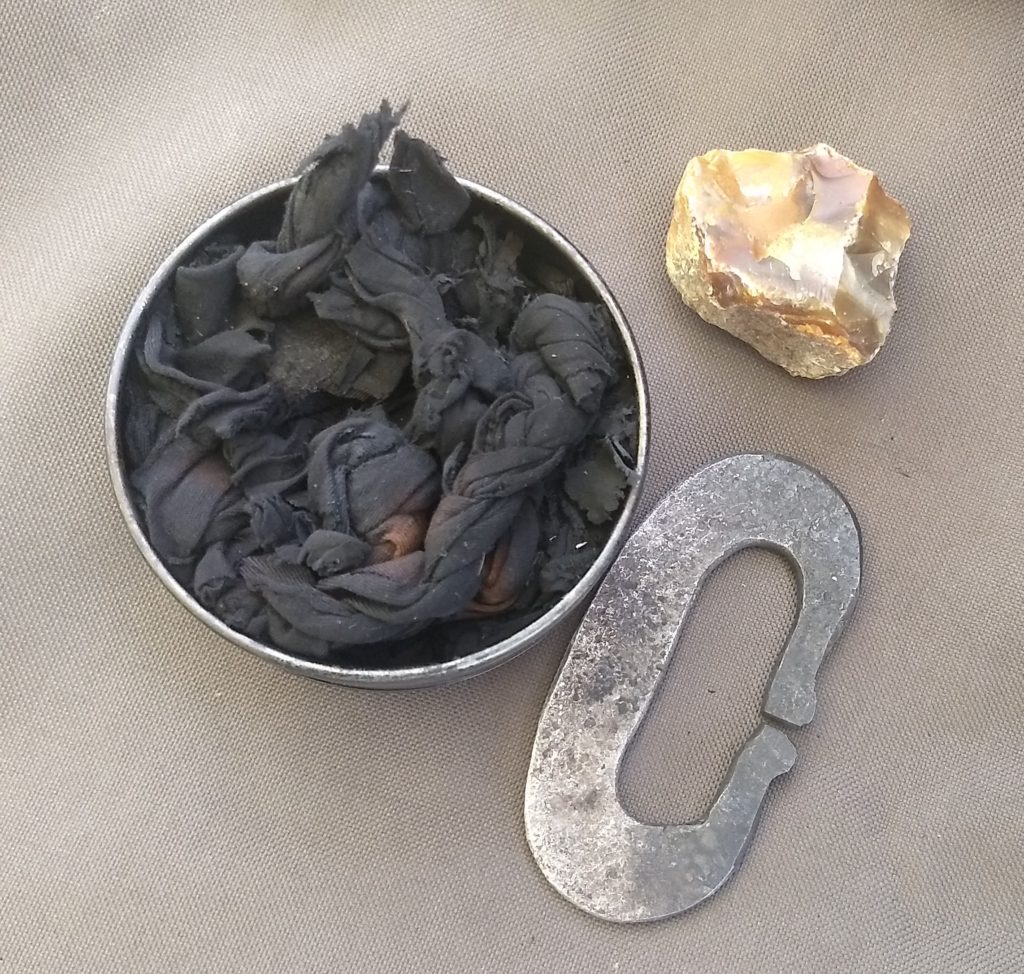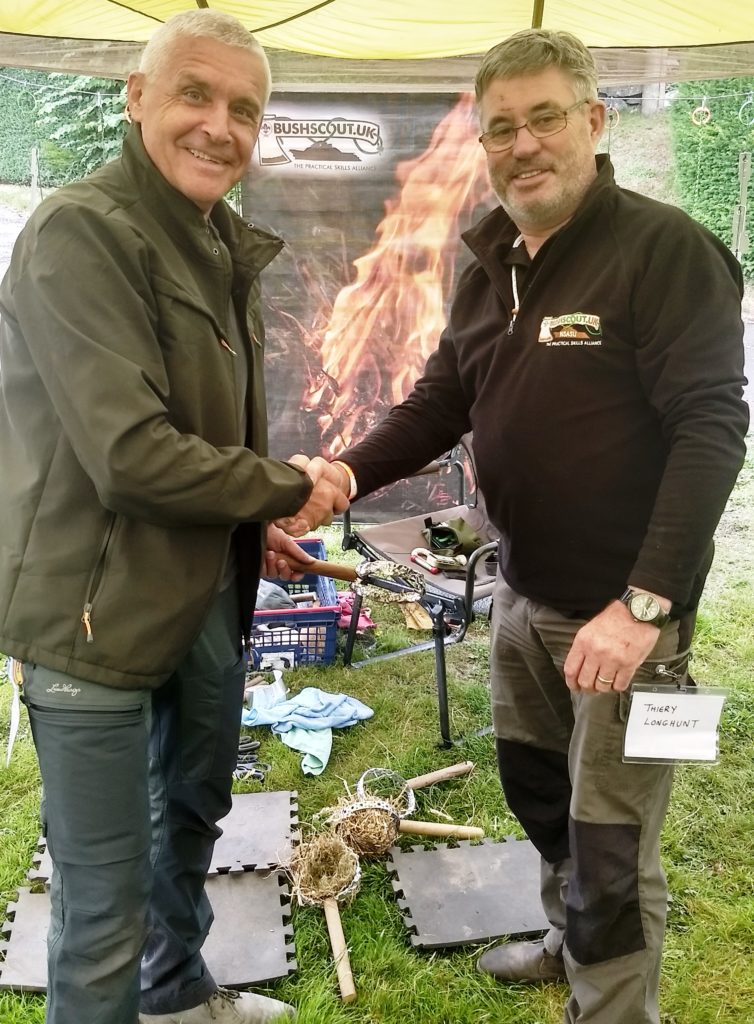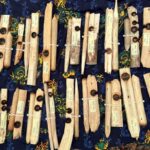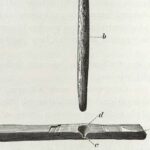In the Stone Age and Bronze Age, European men created fire by striking flintstone on marcasite and catching sparks on tinder made from horseshoe fungi. Marcasite is crystallized pyrite (an iron sulfate mineral) and is not readily available but has to be traded over long distances. When the Iron Age arrived, times got easier for firemakers because, at this age, firelighting was done with flint and steel.

The hardest stones with fine crystal structures (besides diamond) are chert, flintstone, and very dense quartzite. High-carbon steel was used in the Iron Age and later on as a striker; as such, steel was only available at the beginning of this time. It drew nice sparks, and as tinder, char cloth was used to catch them.
Difference between Stone Age and Iron Age fire-making methods
Due to the high strength of steel compared to marcasite mineral, it was possible to change the sequence of spark creation around. In the Stone Age, marcasite was the most valuable part, which was prone to breaking along the crystal boundaries; the flintstone was stricken onto marcasite, and resulting sparks (glowing Fe particles from marcasite) fell to the tinder. With long-lasting steel as a striker, the flintstone was hit hard and iron particles were abraded above, creating sparks behind the steel in the movement direction. Therefore, the tinder had to be located above the flintstone.
How to create an ember with flint and steel

For right-handers, the left hand holds a piece of chert or flintstone so that a sharp edge is exposed to the striking steel, and with the left thumb, a piece of char cloth is held securely down onto the stone and next to the striking edge.

In a circular and smooth motion, the striking steel is moved down along the stone edge, trying to keep the steel as long as possible on the stone edge. Sooner or later, a spark will be caught by the char cloth and start glowing into an ember. The ember should not be touched but should settle and, afterward, be transferred into a tinder bundle and treated like embers from all other fire-starting methods.

Lessons learned from fire lighting with flint and steel
- Securely hold the flintstone striking edge exposed with the char cloth held above
- The steel should be moved in a circular action along the stone edge
- Try to keep the steel as long as possible on the stone edge when striking
- The resulting ember is very sensitive and should be treated carefully
Global Bushcraft Symposium 2022 (GBS2022) and Terry Longhurst
GBS2022 was held from 27th-31st July 2022 at Llyn Tegid (Bala Lake), within Snowdonia National Park, in North Wales, UK.

Terry has nearly 40 years of experience in outdoor activities. He volunteers with The Scout Association and is a founder member and the National Manager of the National Scout Active Support Unit called Bushscout UK, which runs skills days for adult leaders in Scouting throughout the UK. Terry has a wealth of practical experience and has contributed to The Scout Association Haynes Outdoor Adventure Manual, Scouting Magazine, and The Bushcraft Journal while spending the last ten years developing Bushscout UK. He also shares his exploits via his social page, Old Man Woodcraft. Terry was leading the Youth Engagement Camp in the GBS Theme Camps.
Terry Longhurst was reviewing this post on August 14, 2022, and had no objections.
Further readings about Fire-making on this website:.
Creating fire with a magnifying glass
Hadza hand drill friction fire
Bow Drilling – following the method of Mattias Norberg
Giant Fennel stalks for lighting fire
Batwa pygmies traditional fire lighting method
Manketti wood for friction fire lighting
Bushscout UK’s fire bundle basket
Hand drilling in UK as taught by Dave Watson
Bow drill standard procedure by Dave Watson
Bow drilling in Australia by Gordon Dedman
Hand drill friction fire lighting in Australia
Creating fire by hand drill in Namibia
Australian friction fire wood species
.




